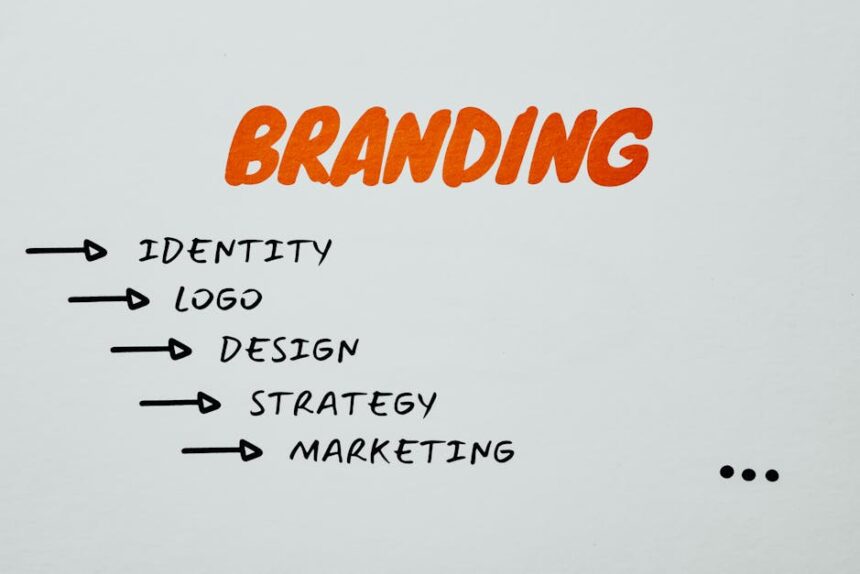Programmatic advertising has fundamentally reshaped the landscape of digital media buying and selling, transforming what was once a manual, labor-intensive process into an automated, data-driven ecosystem. At its core, programmatic refers to the automated buying and selling of ad inventory using technology, replacing human negotiations with algorithms and real-time data analysis. This shift has not only streamlined operations but also introduced unprecedented levels of efficiency, targeting precision, and scalability. The programmatic ecosystem is complex, comprising numerous interconnected platforms and technologies, including Demand-Side Platforms (DSPs), Supply-Side Platforms (SSPs), Ad Exchanges, Data Management Platforms (DMPs), and Ad Servers. Each component plays a vital role in facilitating the instantaneous transactions that define programmatic media.
The evolution of digital advertising laid the groundwork for programmatic’s ascendancy. Initially, ad buying was largely direct, involving direct negotiations between publishers and advertisers, often over phone calls or emails. This was followed by the rise of ad networks, which aggregated inventory from multiple publishers and sold it to advertisers, offering a degree of scale. However, these methods often lacked transparency, granular control, and real-time optimization capabilities. The advent of Real-Time Bidding (RTB) truly ushered in the programmatic era, allowing advertisers to bid on individual ad impressions in milliseconds, based on specific audience criteria and campaign goals. This innovation rapidly expanded into various forms of programmatic transactions, leading to the distinct models of Open Exchange and Programmatic Direct, each with its own set of mechanisms, advantages, and challenges. Understanding these two primary avenues of programmatic media is crucial for any participant in the digital advertising space, whether an advertiser seeking optimal reach and performance or a publisher aiming to maximize monetization of their valuable ad inventory. The choice between an Open Exchange and a Programmatic Direct strategy is not merely tactical; it reflects a deeper understanding of campaign objectives, inventory value, and the inherent trade-offs in transparency, control, and scale that define each path.
Deep Dive: Open Exchange (Real-Time Bidding – RTB)
The Open Exchange, often synonymous with Real-Time Bidding (RTB), represents the most common and expansive form of programmatic advertising. It functions much like a stock market for digital ad impressions, where publishers make their inventory available to a vast pool of advertisers who bid in real-time for the opportunity to display their ads. The sheer volume and speed of transactions within the Open Exchange are staggering, with billions of bid requests processed daily across countless websites and applications. This environment is characterized by its dynamic pricing, competitive bidding, and broad accessibility, making it a cornerstone for many digital media strategies.
The mechanism of an Open Exchange RTB auction is a marvel of technological orchestration. It begins when a user visits a webpage or loads an application that has ad space available. The publisher’s Supply-Side Platform (SSP) detects this available impression and creates a bid request. This bid request contains crucial information about the impression, such as the user’s location, device type, browser, the context of the webpage (URL, keywords), and often anonymized user data (if available and permissible). This bid request is then sent simultaneously to multiple Demand-Side Platforms (DSPs) connected to the exchange. DSPs, acting on behalf of advertisers, evaluate these bid requests against their advertisers’ campaign targeting criteria (e.g., target audience demographics, interests, past behaviors, specific geographic locations, time of day). If an impression matches an advertiser’s criteria, the DSP calculates a bid amount based on the advertiser’s budget, campaign goals (e.g., conversions, clicks, impressions), and the perceived value of that specific impression. All participating DSPs submit their bids back to the SSP within milliseconds. The SSP, which often acts as the auctioneer, then determines the winning bid (typically using a second-price auction model, where the winner pays slightly more than the second-highest bid, though first-price auctions are becoming more common). The winning advertiser’s ad creative is then served to the user, all within the blink of an eye. This entire process, from bid request to ad serving, typically takes less than 100 milliseconds, showcasing the incredible efficiency and speed of the RTB ecosystem.
The participants in the Open Exchange are numerous and distinct. Advertisers, ranging from small businesses to multinational corporations, leverage DSPs to manage their campaigns and bid on inventory. Agencies often act as intermediaries, managing ad spend for multiple clients through DSPs. DSPs are the buyers’ interface, providing tools for campaign setup, audience targeting, bid optimization, and reporting. Ad Exchanges serve as the central marketplace, facilitating the connection between multiple DSPs and SSPs. SSPs represent the publishers, helping them package and monetize their inventory by connecting to various ad exchanges and DSPs. Publishers, the content creators, supply the ad inventory. Finally, Data Management Platforms (DMPs) often sit alongside DSPs, providing valuable audience data for targeting and segmentation.
The Open Exchange offers several compelling advantages. Its primary benefit is scale and reach. Advertisers gain access to an immense pool of ad inventory across millions of websites and apps, allowing them to reach a vast and diverse audience. This unparalleled reach is difficult to replicate through other methods. Cost-effectiveness is another significant draw. The competitive bidding environment of RTB often drives down the cost per impression (CPM), allowing advertisers to acquire impressions at highly optimized prices. This can be particularly beneficial for performance-driven campaigns where maximizing impressions within a set budget is crucial. The automation and efficiency inherent in RTB eliminate much of the manual work associated with traditional ad buying, freeing up human resources to focus on strategy and optimization rather than negotiation and insertion orders. Furthermore, granular targeting capabilities are a hallmark of the Open Exchange. DSPs allow advertisers to target audiences based on a myriad of attributes, including demographics, interests, behaviors, geographic location, device type, operating system, time of day, and even specific contextual categories of content. This precision allows for highly relevant ad delivery. Finally, the Open Exchange is inherently performance-driven, allowing for real-time optimization based on campaign metrics like clicks, conversions, viewability, and cost per acquisition (CPA). Algorithms continuously learn and adjust bids and targeting to improve outcomes. The lower barrier to entry for buyers also makes it accessible for advertisers of all sizes to participate.
Despite its numerous benefits, the Open Exchange also presents significant challenges. Brand safety concerns are paramount. Because inventory is sourced from a vast and often uncurated network of publishers, advertisers face the risk of their ads appearing next to inappropriate, offensive, or low-quality content. While tools like brand safety filters and whitelists exist, ensuring absolute protection across billions of impressions can be difficult. Ad fraud is another pervasive issue. The automated nature of RTB makes it susceptible to various forms of fraud, including bot traffic, domain spoofing (falsely representing inventory as premium), ad stacking, and pixel stuffing. These fraudulent activities can lead to wasted ad spend and skewed performance data. Viewability issues are also common. An ad is considered “viewable” if a certain percentage of its pixels are on screen for a minimum amount of time (e.g., 50% for 1 second for display ads). In the Open Exchange, where inventory quality can vary, ensuring high viewability across all impressions can be challenging, meaning many ads may never actually be seen by a human user. Inventory quality variability is a direct consequence of the scale; while there is premium inventory available, a significant portion comes from long-tail publishers or less desirable placements, which can impact campaign performance and brand perception. Price volatility is inherent in an auction model; CPMs can fluctuate dramatically based on demand, seasonality, and competitive intensity, making budget planning less predictable. Transparency challenges also persist. Advertisers often have limited visibility into the exact publishers where their ads appear, and the complex ad tech fee structure across multiple intermediaries (DSPs, SSPs, ad exchanges) can obscure the true cost of media. Bid shading, where DSPs slightly reduce winning bids to save advertisers money, while often beneficial, can also add a layer of opacity to the auction process. Finally, navigating GDPR and CCPA compliance within the Open Exchange can be complex, given the involvement of multiple data handlers and the global nature of transactions.
Deep Dive: Programmatic Direct (Private Marketplace, Programmatic Guaranteed, Preferred Deals)
Programmatic Direct represents a more controlled and curated approach to automated ad buying, blending the efficiency of programmatic technology with the predictability and quality of direct publisher relationships. Unlike the open auction of RTB, Programmatic Direct transactions are executed through pre-negotiated terms between a specific buyer (advertiser or agency) and a specific seller (publisher). This category encompasses several distinct deal types: Private Marketplaces (PMPs), Preferred Deals, and Programmatic Guaranteed (often called Automated Guaranteed). Each offers varying degrees of exclusivity, pricing models, and impression guarantees, providing advertisers and publishers with more flexibility and control over their transactions.
The mechanism behind Programmatic Direct deals differs significantly from the Open Exchange. Instead of a purely open auction, these deals involve direct communication and agreement between a buyer and a seller, which is then codified and executed programmatically, often using a “Deal ID.” A Private Marketplace (PMP), for instance, is an invitation-only auction. The publisher curates a specific segment of their inventory (e.g., specific ad units, audience segments, or premium content sections) and invites a select group of advertisers to bid on it. While still an auction, it’s a closed one, meaning only approved buyers can participate. Publishers use their SSPs to set up PMPs, and buyers use their DSPs to access them using the unique Deal ID. Bidding within a PMP can be set up as a first-price or second-price auction, similar to the open exchange, but with controlled participants and often higher floor prices.
Preferred Deals, also known as “first-look” deals, are even more exclusive. In a Preferred Deal, a publisher offers specific inventory to a buyer at a fixed, negotiated price, before that inventory is made available to the Open Exchange or other PMPs. The buyer has the first right of refusal to purchase those impressions at the agreed-upon price. There is no guarantee of impression volume; the buyer simply gets the first opportunity to bid. If the buyer chooses not to purchase the impression, it may then cascade to other PMPs or the Open Exchange. This model offers predictability in pricing and access to premium inventory, but still requires the buyer to actively bid on each impression.
The most controlled form of Programmatic Direct is Programmatic Guaranteed (PG), also known as Automated Guaranteed or Programmatic Direct Guaranteed. This model most closely resembles traditional direct media buying, but with the efficiency of programmatic execution. A buyer and a publisher negotiate a fixed price (CPM) and a guaranteed volume of impressions for a specific time period or campaign duration. Once agreed upon, the terms are set within their respective SSP and DSP platforms using a Deal ID, and the impressions are automatically delivered as agreed. There is no real-time bidding involved for these impressions; they are reserved for the buyer. This offers complete predictability in both pricing and inventory delivery, ensuring advertisers can secure premium placements and reach their desired audience without the uncertainties of auction dynamics.
The primary participants in Programmatic Direct deals are the Publisher and the Buyer (Advertiser or Agency). Their SSPs and DSPs act as the technological facilitators, ensuring the agreed-upon terms are executed automatically. The relationship between the publisher and buyer is much closer and more direct than in the Open Exchange, often involving human negotiation and collaboration before the programmatic execution.
The advantages of Programmatic Direct are numerous, stemming primarily from the increased control and predictability it offers. Brand safety and quality control are significantly enhanced. Because advertisers are dealing directly with known publishers, they have a clear understanding of where their ads will appear, mitigating the risk of exposure to inappropriate content. Publishers, in turn, can curate their inventory to maintain high quality standards for specific buyers. Predictability and guaranteed impressions (especially with PG) are major benefits. Advertisers can be confident that their campaigns will deliver the desired impression volume at a stable price, which is crucial for brand-building initiatives or campaigns with strict reach goals. This eliminates the uncertainty of auction dynamics. Enhanced transparency is another key advantage. Buyers have full visibility into the publishers they are buying from and the specific terms of the deal, including the exact CPM. This reduces concerns about hidden fees or opaque supply paths.
Access to premium inventory is a cornerstone of Programmatic Direct. Publishers often reserve their most valuable ad placements, exclusive audience segments, or high-impact formats for direct deals, offering buyers access to inventory that may not be available on the Open Exchange. This allows for more impactful branding campaigns. Greater data sharing and collaboration between buyer and seller are also facilitated. Publishers can share more granular first-party audience data with trusted partners, enabling advertisers to execute highly precise targeting strategies. This direct relationship fosters a collaborative environment for custom solutions. Higher viewability rates are generally observed in Programmatic Direct because publishers are incentivized to provide high-quality, front-and-center placements. Reduced ad fraud risk is also a significant benefit, as the direct relationship and curated inventory reduce the opportunities for fraudulent activity. Finally, GDPR and CCPA compliance can be simplified, as the direct relationship allows for clearer data consent management and data processing agreements between the involved parties. The opportunity for custom creative and integrations is also higher, as direct relationships allow for more bespoke ad experiences or sponsorships.
However, Programmatic Direct also comes with its drawbacks. Its primary limitation is limited scale compared to the vastness of the Open Exchange. While the quality of inventory is higher, the volume available through direct deals with specific publishers will always be less than the aggregated inventory of the entire internet. This can make it challenging for campaigns requiring massive reach. Higher CPMs are typical, as advertisers are paying a premium for guaranteed quality, exclusivity, and predictability. While this represents value for money, it means a higher absolute cost per impression. Less flexibility in pricing is inherent, as prices are negotiated upfront rather than dynamically determined by an auction, though PMPs still involve bidding. Requires more direct relationship management initially, as buyers and publishers need to establish and maintain these direct connections, which can be time-consuming compared to simply configuring a DSP for an Open Exchange campaign. The setup can be more involved, requiring coordination to establish Deal IDs and ensure proper integration between the buyer’s DSP and the publisher’s SSP. Lastly, there’s less opportunity for dynamic optimization based purely on performance metrics once a deal is guaranteed, particularly for Programmatic Guaranteed deals, as the impressions are pre-booked. While ongoing campaign monitoring and creative optimization are still possible, the underlying inventory purchase is fixed.
Key Differentiating Factors & Decision Framework
The choice between leveraging the Open Exchange and opting for Programmatic Direct strategies hinges on a meticulous evaluation of campaign objectives, budget considerations, and the desired level of control and transparency. Understanding the core differentiating factors between these two programmatic approaches is crucial for making informed decisions in media buying. Each model excels in different scenarios, and a robust programmatic strategy often involves a judicious blend of both to achieve a holistic set of goals.
Inventory Quality & Brand Safety: This is perhaps the most stark differentiator. In the Open Exchange, inventory quality can be highly variable. While premium inventory exists, the vast majority comes from a long tail of websites, and there’s less direct control over where an ad will ultimately appear. This inherently carries higher brand safety risks, as ads might inadvertently be placed next to undesirable content. Advertisers rely heavily on third-party verification tools and brand safety filters within DSPs to mitigate these risks, but absolute protection is challenging given the scale and anonymity. Conversely, Programmatic Direct offers superior inventory quality and virtually eliminates brand safety concerns. Publishers curate specific inventory for these deals, often reserving their most valuable and contextually relevant placements. The direct relationship provides advertisers with complete transparency regarding where their ads will appear, ensuring alignment with brand values and premium content environments. This makes Programmatic Direct ideal for brand-centric campaigns where context and reputation are paramount.
Scale & Reach: The Open Exchange offers unparalleled scale and reach. By connecting to thousands of SSPs and millions of websites and apps, advertisers can access an incredibly vast pool of potential impressions. This is highly advantageous for campaigns focused on mass awareness, broad audience reach, or performance initiatives requiring a large volume of impressions to optimize algorithms. For advertisers seeking to cast a wide net and maximize impression volume, the Open Exchange is the undisputed leader. Programmatic Direct, by its very nature, has a more limited scale. While the inventory is often of higher quality, it comes from a select group of publishers with whom direct relationships have been established. This means that while quality is high, the total volume of impressions available through Programmatic Direct will always be less than the aggregated inventory of the Open Exchange. It’s better suited for campaigns targeting specific, high-value audiences or premium placements rather than broad reach.
Cost & Pricing Models: The pricing dynamics vary significantly. The Open Exchange operates on a real-time, dynamic auction model (RTB), where prices (CPMs) are constantly fluctuating based on demand, supply, and competitive bidding. This competitive environment can often drive down CPMs, making it a highly cost-effective option for advertisers focused on efficiency and maximizing impressions within a budget. While prices can be volatile, the average CPM tends to be lower than direct deals. Programmatic Direct typically involves higher CPMs. Advertisers pay a premium for guaranteed quality, exclusivity, reduced risk, and predictable delivery. While PMPs still involve bidding, they often have higher floor prices. Programmatic Guaranteed deals have fixed, negotiated CPMs, offering price predictability but at a higher price point due to the guaranteed delivery of premium inventory. The choice here depends on whether the primary goal is cost efficiency at scale or guaranteed access to premium inventory at a predictable, albeit higher, price.
Transparency: Transparency is a persistent challenge in the Open Exchange. Advertisers often lack complete visibility into the exact publishers where their ads are served (beyond broad categories), the precise path of their ad spend (due to numerous intermediaries and hidden fees), and the specifics of auction dynamics (e.g., bid shading). While efforts are being made to improve transparency (e.g., ads.txt, sellers.json), the complexity of the ecosystem makes it difficult to achieve full clarity. Programmatic Direct, by contrast, offers significantly enhanced transparency. Advertisers know exactly which publishers they are buying from and often have a direct relationship. The terms of the deal, including pricing and impression volume, are explicitly negotiated and agreed upon, providing a clear understanding of the media spend. This directness fosters trust and accountability.
Control & Predictability: The Open Exchange offers less control and predictability. While advertisers can set targeting parameters and budget caps, the actual delivery of impressions is subject to the real-time auction, meaning there’s no guarantee of specific placements or impression volume. Campaign performance can fluctuate based on market conditions and competitive bidding. For campaigns where Programmatic Direct excels, control and predictability are paramount. With Programmatic Guaranteed deals, advertisers secure a specific volume of impressions at a fixed price, ensuring campaign delivery and budget certainty. PMPs and Preferred Deals also offer greater control over inventory quality and audience targeting through curated access. This control is invaluable for brand-building campaigns, product launches, or any initiative where consistent, high-quality exposure is critical.
Ad Fraud & Viewability: While both models are susceptible to ad fraud and viewability issues, the risks are generally higher in the Open Exchange. The vastness and less curated nature of the inventory pool create more opportunities for bot traffic, domain spoofing, and other fraudulent activities. Similarly, viewability can be a concern due to placements on less optimal parts of a page or lower-quality sites. Advertisers must rely heavily on third-party verification solutions. Programmatic Direct inherently carries lower risks for ad fraud and typically boasts higher viewability rates. The direct relationship with publishers means less anonymity, making it harder for fraudulent actors to operate. Publishers are also incentivized to provide high-quality placements and maintain good viewability metrics to retain direct business.
Targeting Precision: Both programmatic models offer sophisticated targeting capabilities. In the Open Exchange, advertisers can leverage a wide array of third-party data segments (demographics, interests, behaviors) available through DSPs and DMPs, combined with contextual targeting and geo-targeting, to reach specific audiences at scale. Programmatic Direct also allows for highly precise targeting, often with the added benefit of accessing a publisher’s first-party data. Publishers can share unique insights about their audience that may not be available through third-party data providers on the open market. This allows for hyper-targeted campaigns based on deep audience understanding, enhancing relevance and engagement.
Relationship Management: The Open Exchange requires minimal direct relationship management between buyers and sellers. Transactions are largely automated through platforms. While there’s a need for DSP and SSP account management, direct publisher-advertiser relationships are not central to the operational flow. Programmatic Direct, on the other hand, necessitates closer relationships between publishers and advertisers. These deals often begin with direct conversations, negotiations, and ongoing collaboration to optimize performance. This can be more time-consuming but fosters stronger partnerships and allows for more customized solutions.
Campaign Goals: When to use Which?
The decision framework for choosing between Programmatic Direct and Open Exchange heavily depends on an advertiser’s primary campaign objectives:
- Brand Awareness/Reach: For broad brand awareness campaigns aiming to reach the largest possible audience, the Open Exchange is often the most efficient choice due to its unparalleled scale and cost-effectiveness. It allows advertisers to maximize impressions within a given budget.
- Performance/Conversions (at scale): If the goal is driving high volumes of clicks, leads, or conversions, and budget efficiency is key, the Open Exchange is generally preferred. Its ability to process vast amounts of data and optimize bids in real-time makes it effective for performance marketing where every impression counts towards a conversion.
- Premium Branding/High-Impact Campaigns: For campaigns focused on brand perception, delivering high-quality user experiences, or launching new products with maximum impact, Programmatic Direct (especially Programmatic Guaranteed or PMPs with premium inventory) is the superior choice. It ensures ads appear in brand-safe, high-quality environments, often on reputable publisher sites, which reinforces brand credibility.
- Guaranteed Performance/Predictability: When budget certainty and guaranteed impression delivery are critical, for instance, during a major product launch or seasonal campaign where a specific reach must be achieved, Programmatic Guaranteed is the ideal solution. It removes the uncertainty of auctions and ensures inventory is reserved.
- Niche Audience/Specific Context: For reaching highly specific or niche audiences, or placing ads within very particular contextual environments, Programmatic Direct can be highly effective. Publishers can offer segments of their first-party data or specific content sections that perfectly align with an advertiser’s target, leading to more relevant ad exposure.
- Testing & Exploration: The Open Exchange offers a lower barrier to entry and greater flexibility for testing new audiences, creatives, or targeting strategies due to its dynamic nature and scale. It allows for rapid iteration and learning.
In many cases, the optimal strategy involves a hybrid approach, leveraging the strengths of both models to create a balanced and effective programmatic media plan.
Hybrid Strategies & The Evolving Landscape
In today’s sophisticated programmatic ecosystem, advertisers and publishers rarely rely exclusively on either Open Exchange or Programmatic Direct. Instead, the trend is towards hybrid strategies that strategically combine the strengths of both to optimize reach, quality, efficiency, and performance. This convergence is driven by the evolving needs of the market, advancements in ad tech, and the continuous quest for greater transparency and control. The interplay between these models is dynamic, adapting to new technologies and privacy regulations.
One of the primary ways buyers and sellers combine strategies is by creating a tiered approach to inventory sourcing. An advertiser might allocate a significant portion of their budget to Programmatic Guaranteed deals for their most premium, brand-safe inventory with guaranteed delivery, ensuring core branding objectives are met. A second tier might involve PMPs, where they have access to curated inventory from preferred publishers but still benefit from competitive bidding within a controlled environment. Finally, the Open Exchange serves as the broad reach and performance engine, allowing advertisers to scale campaigns, find incremental reach, and optimize for conversions across a vast array of inventory at competitive prices. This layered approach ensures both quality and quantity, brand safety and broad reach.
Similarly, publishers adopt multifaceted monetization strategies. They will continue to pursue direct sales for their highest-value, bespoke sponsorships and large-scale, long-term commitments. They then offer their premium but non-guaranteed inventory through PMPs and Preferred Deals to specific buyers, maintaining control over pricing and access while still benefiting from programmatic efficiency. The remaining inventory is then made available to the Open Exchange, allowing them to monetize remnant inventory and capture demand from the widest possible pool of advertisers, maximizing overall yield. This dynamic allocation ensures that publishers can extract the maximum value from their diverse inventory.
The increasing convergence between these models is undeniable. Historically, direct sales were manual and programmatic was automated. Now, Programmatic Guaranteed bridges this gap, offering the predictability of direct sales with the efficiency of programmatic execution. The lines continue to blur as technologies evolve.
The Role of Header Bidding has been pivotal in leveling the playing field for publishers and reshaping the dynamics between open and direct programmatic channels. Before header bidding, publishers often relied on a “waterfall” or “daisy chain” approach, sequentially offering impressions to ad networks and exchanges based on their historical performance, with the Open Exchange typically at the bottom. This meant publishers often sold their inventory at lower prices than its true market value. Header bidding allows publishers to offer their inventory to multiple SSPs and ad exchanges (including direct programmatic deal partners) simultaneously, before calling their ad server. This creates a unified auction where all demand sources compete at the same time, leading to greater competition, higher fill rates, and ultimately, increased yield for publishers. It also helps expose the true market value of an impression, often revealing that inventory previously thought of as “remnant” can command higher prices. From an advertiser’s perspective, header bidding means more premium inventory might be available in the Open Exchange, and the auction dynamics become fairer.
Server-to-server integrations further enhance efficiency and reduce latency, particularly important for complex header bidding setups and high-volume programmatic transactions. By allowing platforms to communicate directly, bypassing browser-side requests, they streamline the bid request and response process, leading to faster ad rendering and improved user experience.
The widespread adoption of Deal IDs has been instrumental in facilitating Programmatic Direct transactions. A Deal ID is a unique identifier assigned to a specific Programmatic Direct deal (PMP, Preferred Deal, or Programmatic Guaranteed). It allows buyers’ DSPs and publishers’ SSPs to recognize and execute the pre-negotiated terms of a deal within the automated programmatic ecosystem. This small but crucial identifier is the backbone that connects the human negotiation of direct deals with the machine-driven efficiency of programmatic execution.
Future Trends continue to shape the programmatic landscape, influencing the balance between Open Exchange and Programmatic Direct:
- Automation and Artificial Intelligence (AI): The drive for greater automation continues. AI and machine learning will become even more sophisticated in optimizing bids, predicting performance, and identifying optimal supply paths, blurring the lines further between human strategy and machine execution. This could lead to more dynamic PMP negotiations or more intelligent bidding on the open exchange for niche inventory.
- Data Clean Rooms: As privacy regulations tighten and third-party cookies deprecate, data clean rooms are emerging as secure environments where advertisers and publishers can collaborate on first-party data without sharing the raw data itself. This will enhance the value and precision of Programmatic Direct deals, allowing for highly customized audience targeting while respecting user privacy.
- Privacy-Centric Advertising: The shift towards privacy-first advertising will profoundly impact both models. While Open Exchange will need to adapt to new identifier solutions (e.g., universal IDs, contextual targeting) in a cookieless world, Programmatic Direct, leveraging first-party data and direct relationships, may gain an advantage as a more privacy-compliant way to target specific audiences.
- Supply Path Optimization (SPO): Advertisers and agencies are increasingly focused on SPO, which involves streamlining the number of intermediaries in the supply chain to reduce ad tech fees and increase transparency. This means buyers will demand clearer paths to publishers, potentially favoring direct connections (Programmatic Direct) or open exchanges with fewer hops, driving a cleaner, more efficient ecosystem. SPO is a continuous effort to eliminate inefficiencies and reduce the number of vendors in the supply path, ensuring more of the advertiser’s budget reaches the publisher. This often involves prioritizing direct SSP relationships or ensuring DSPs have direct integrations with high-quality publishers.
- Contextual Targeting’s Resurgence: With the decline of third-party cookies, contextual targeting (placing ads based on the content of the webpage) is experiencing a resurgence. This benefits both Open Exchange (through advanced contextual analysis tools) and Programmatic Direct (where publishers can offer highly specific contextual environments).
- Attention Metrics: Beyond viewability, the industry is moving towards measuring actual “attention” to ads. This will further highlight the value of premium, curated inventory available through Programmatic Direct, where publishers can ensure ads are placed in environments conducive to user engagement.
- Cross-Channel Programmatic: Programmatic capabilities are expanding beyond display and video to encompass connected TV (CTV), audio, digital out-of-home (DOOH), and even gaming. Each new channel brings its own set of considerations regarding open versus direct programmatic opportunities. For example, premium CTV inventory is often sold programmatically direct or via PMPs due to its high value and brand safety requirements.
The continuous evolution of programmatic advertising means that the distinction between Open Exchange and Programmatic Direct is less about an “either/or” choice and more about a strategic “how and when to use each.” The market is moving towards greater sophistication, where buyers demand more control and transparency while publishers seek to maximize yield and maintain brand integrity. Hybrid strategies, enabled by technologies like header bidding and driven by a focus on data privacy and supply path optimization, are the cornerstone of effective programmatic media in the modern digital landscape.
Implementation & Best Practices
Successfully navigating the programmatic landscape, whether through Open Exchange, Programmatic Direct, or a hybrid approach, requires a structured implementation strategy and adherence to best practices for both advertisers and publishers. Effective planning, meticulous execution, and continuous optimization are key to unlocking the full potential of automated media buying and selling.
For Advertisers:
-
Define Clear Campaign Goals: Before embarking on any programmatic endeavor, clearly articulate the campaign objectives. Is the primary goal brand awareness, lead generation, customer acquisition, or retention? Different goals will dictate the most appropriate programmatic approach. For instance, broad awareness at scale might lean towards the Open Exchange, while a premium brand launch might favor Programmatic Guaranteed. Specific, measurable, achievable, relevant, and time-bound (SMART) goals are crucial. This foundational step guides all subsequent decisions regarding inventory type, targeting, and budget allocation.
-
Evaluate Inventory Sources Strategically: Do not treat all impressions equally. Understand the nuances of inventory quality and how it aligns with your brand.
- Open Exchange: Leverage robust brand safety and fraud prevention tools. Utilize keyword blocking, domain blacklists, and third-party verification services to filter out undesirable inventory. Prioritize DSPs that offer strong inventory quality controls and supply path optimization (SPO) features, aiming for direct publisher connections wherever possible to reduce intermediary fees and increase transparency. Regularly audit impression logs to identify and exclude low-performing or questionable sites.
- Programmatic Direct: Actively seek out premium publishers whose content aligns with your brand and target audience. Build relationships with publishers that can offer exclusive inventory, first-party data segments, or custom advertising opportunities (e.g., sponsorships, custom ad units). Negotiate clear terms for PMPs, Preferred Deals, and Programmatic Guaranteed, focusing on viewability guarantees and transparency.
-
Leverage Data Effectively: Data is the fuel of programmatic.
- Audience Targeting: Utilize a combination of first-party data (from your CRM, website visitors), second-party data (shared directly by partners like publishers), and third-party data (purchased from data providers) to build precise audience segments. For Open Exchange, third-party data is often critical for scale. For Programmatic Direct, first-party and second-party data collaborations with publishers can yield highly valuable, unique audience segments.
- Contextual Targeting: Employ advanced contextual targeting solutions that analyze page content beyond keywords, understanding sentiment and meaning to ensure brand safety and relevance, particularly valuable in a cookieless future.
- Dynamic Creative Optimization (DCO): Use DCO to serve personalized ad creatives based on user data, context, and campaign performance. This enhances relevance and improves engagement rates across both Open Exchange and Programmatic Direct.
-
Monitor Performance and Optimize Continuously: Programmatic is not a set-it-and-forget-it strategy.
- Key Performance Indicators (KPIs): Track relevant KPIs aligned with your campaign goals (e.g., CPM, CTR, conversion rate, CPA, ROAS, viewability rate, completion rate for video).
- A/B Testing: Continuously test different creatives, landing pages, audience segments, and bid strategies to identify what resonates most effectively.
- Real-Time Optimization: Leverage the real-time nature of programmatic to make immediate adjustments. Pause underperforming placements, increase bids on high-converting segments, and reallocate budgets to optimize performance. For Programmatic Guaranteed, while the deal is fixed, creative and landing page optimization are still crucial.
- Fraud Detection and Viewability Monitoring: Integrate and actively monitor third-party verification tools to detect and block ad fraud and ensure high viewability across all campaigns. This protects ad spend and ensures ads are actually seen by humans.
-
Vendor Selection (DSPs, DMPs): Choose programmatic partners carefully.
- DSPs: Select a DSP that offers robust targeting capabilities, transparent reporting, strong brand safety features, and integrations with a wide range of SSPs and data providers. Consider their capabilities for both Open Exchange and Programmatic Direct deals (e.g., Deal ID support).
- DMPs: A DMP can centralize and activate your first-party data, enrich it with third-party data, and seamlessly integrate with your DSPs for more intelligent targeting.
- Transparency & Support: Prioritize partners committed to transparency in their fees and data usage, and who offer strong customer support and strategic guidance.
-
Consider the Supply Path: Engage in supply path optimization (SPO) by understanding the journey of an impression from publisher to advertiser. Seek DSPs that have direct integrations with SSPs, reducing the number of intermediaries (hops) and minimizing fees, thereby ensuring more of your budget goes towards actual media spend. This also helps improve transparency.
For Publishers:
-
Develop a Diverse Monetization Strategy: Relying on a single revenue stream is risky. A balanced approach combining direct sales, Programmatic Direct, and Open Exchange ensures maximum yield and diversification.
- Direct Sales: Continue to nurture direct relationships for high-value, bespoke deals that command premium prices and offer unique integration opportunities.
- Programmatic Direct (PMPs, Preferred, PG): Actively package and offer premium inventory, unique audience segments (based on first-party data), and custom ad formats through PMPs and Programmatic Guaranteed deals. This allows you to set higher floor prices, control access, and offer guaranteed value to specific buyers. Promote the value of your direct audience and content.
- Open Exchange: Use the Open Exchange to monetize remaining inventory and capture demand from the broadest possible pool of advertisers. Ensure competitive pricing and a healthy fill rate through proper yield management.
-
Yield Optimization: Continuously optimize your ad stack to maximize revenue from every impression.
- Header Bidding: Implement header bidding (client-side or server-side) to allow multiple demand sources (DSPs, ad exchanges, ad networks, direct deal partners) to bid simultaneously on your inventory. This increases competition for each impression and often leads to higher CPMs than a waterfall setup.
- Dynamic Allocation: Configure your ad server to dynamically allocate impressions to the highest-paying demand source in real-time, balancing between direct campaigns, PMPs, and Open Exchange.
- Floor Pricing: Strategically set floor prices for your inventory in both PMPs and the Open Exchange to ensure you’re not selling impressions for less than their value. Experiment with dynamic floor pricing based on demand and inventory type.
-
Data Management: Your first-party data is your most valuable asset.
- DMP Usage: Implement a Data Management Platform (DMP) to collect, organize, and activate your first-party audience data. Segment your audience effectively based on demographics, interests, behaviors, and content consumption.
- Data Activation: Make your data accessible to trusted advertising partners through your SSP for Programmatic Direct deals. This allows advertisers to target specific segments on your site, increasing the value of your inventory. Ensure all data handling is compliant with privacy regulations (GDPR, CCPA).
- Data Clean Rooms: Explore participation in data clean rooms to securely share insights with advertisers without exposing raw user data.
-
Maintain Brand Safety and Quality for Buyers: Ensure your site environment is clean, brand-safe, and free of fraudulent activity. Advertisers paying a premium, especially through Programmatic Direct, expect high-quality inventory.
- Content Moderation: Implement robust content moderation to prevent ads from appearing next to inappropriate content.
- Ad Quality: Ensure your site loads ads quickly and smoothly, minimizing latency. Monitor ad creative quality to prevent malware or disruptive ad experiences.
- Fraud Prevention: Use internal and third-party tools to monitor for and prevent ad fraud (e.g., bot traffic, invalid impressions) on your site.
- Viewability: Design your site layouts for high viewability and actively monitor viewability metrics. Higher viewability translates to higher value for advertisers.
-
Header Bidding Implementation: For publishers, properly implementing header bidding is critical. This involves choosing between client-side (browser-based) or server-to-server (S2S) solutions, selecting the right header bidding wrapper, and managing the number of bidders to avoid latency issues. Correct configuration maximizes yield by ensuring all demand sources compete fairly and simultaneously for each impression.
-
Vendor Selection (SSPs): Choose SSPs that offer robust features for yield management, extensive connections to DSPs and ad exchanges, strong support for Programmatic Direct deals (Deal ID management), and comprehensive reporting. Ensure your SSP is transparent about their fees and committed to industry initiatives like ads.txt and sellers.json to verify legitimate supply paths.
By diligently applying these implementation strategies and best practices, both advertisers and publishers can navigate the complexities of programmatic advertising more effectively, optimize their outcomes, and build more sustainable and profitable digital media businesses within an ever-evolving ecosystem.











